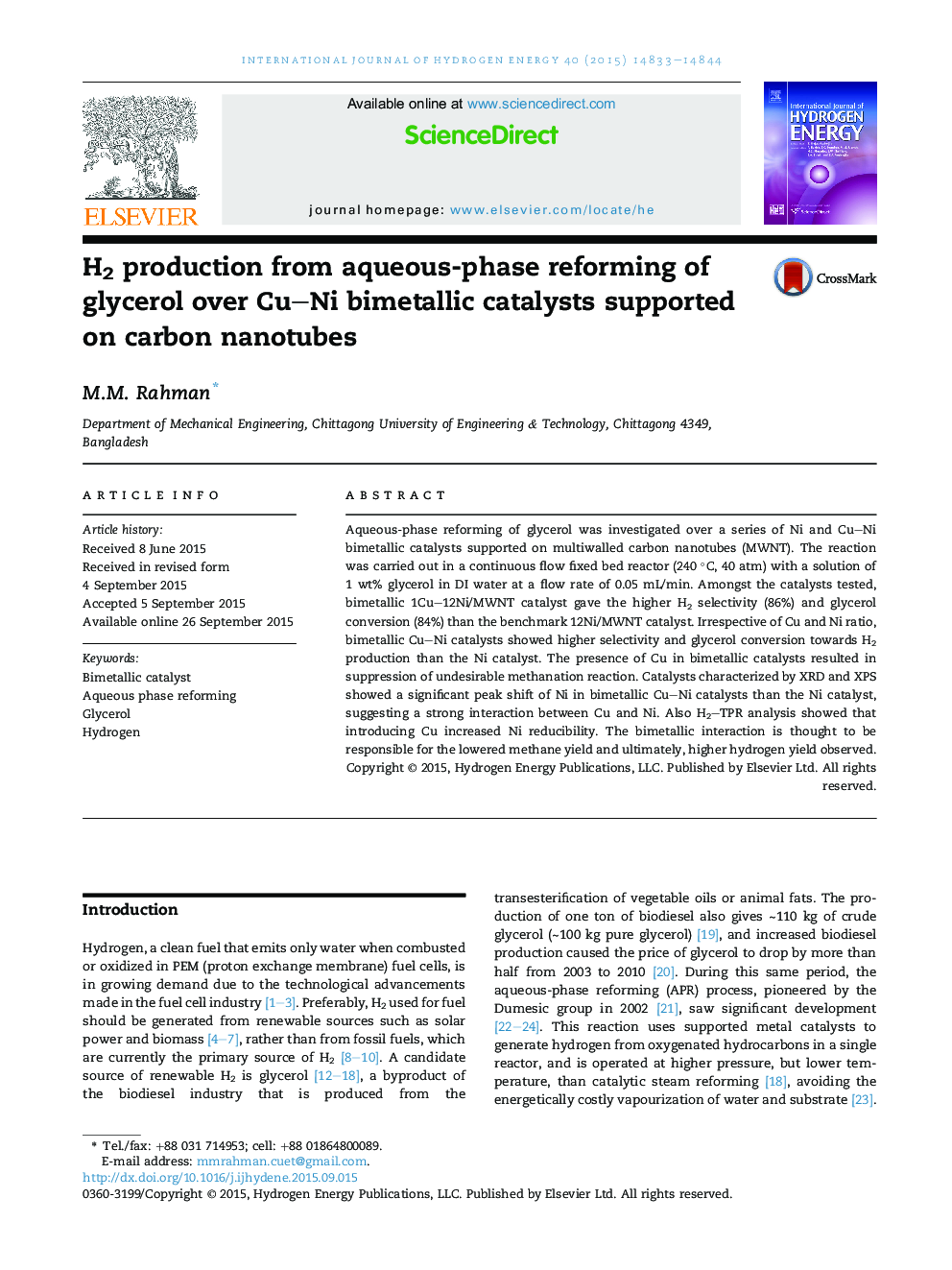| Article ID | Journal | Published Year | Pages | File Type |
|---|---|---|---|---|
| 1274253 | International Journal of Hydrogen Energy | 2015 | 12 Pages |
•Bimetallic Cu–Ni alloy catalysts supported on MWNT was synthesized.•1Cu–12Ni/MWNT catalysts gave higher H2 selectivity and glycerol conversion.•H2–TPR profiles show that increasing the Cu wt% decrease the reduction temperature.•MWNT support gave higher H2 yield than commercial oxide support γ-Al2O3 and MgO.
Aqueous-phase reforming of glycerol was investigated over a series of Ni and Cu–Ni bimetallic catalysts supported on multiwalled carbon nanotubes (MWNT). The reaction was carried out in a continuous flow fixed bed reactor (240 °C, 40 atm) with a solution of 1 wt% glycerol in DI water at a flow rate of 0.05 mL/min. Amongst the catalysts tested, bimetallic 1Cu–12Ni/MWNT catalyst gave the higher H2 selectivity (86%) and glycerol conversion (84%) than the benchmark 12Ni/MWNT catalyst. Irrespective of Cu and Ni ratio, bimetallic Cu–Ni catalysts showed higher selectivity and glycerol conversion towards H2 production than the Ni catalyst. The presence of Cu in bimetallic catalysts resulted in suppression of undesirable methanation reaction. Catalysts characterized by XRD and XPS showed a significant peak shift of Ni in bimetallic Cu–Ni catalysts than the Ni catalyst, suggesting a strong interaction between Cu and Ni. Also H2–TPR analysis showed that introducing Cu increased Ni reducibility. The bimetallic interaction is thought to be responsible for the lowered methane yield and ultimately, higher hydrogen yield observed.
